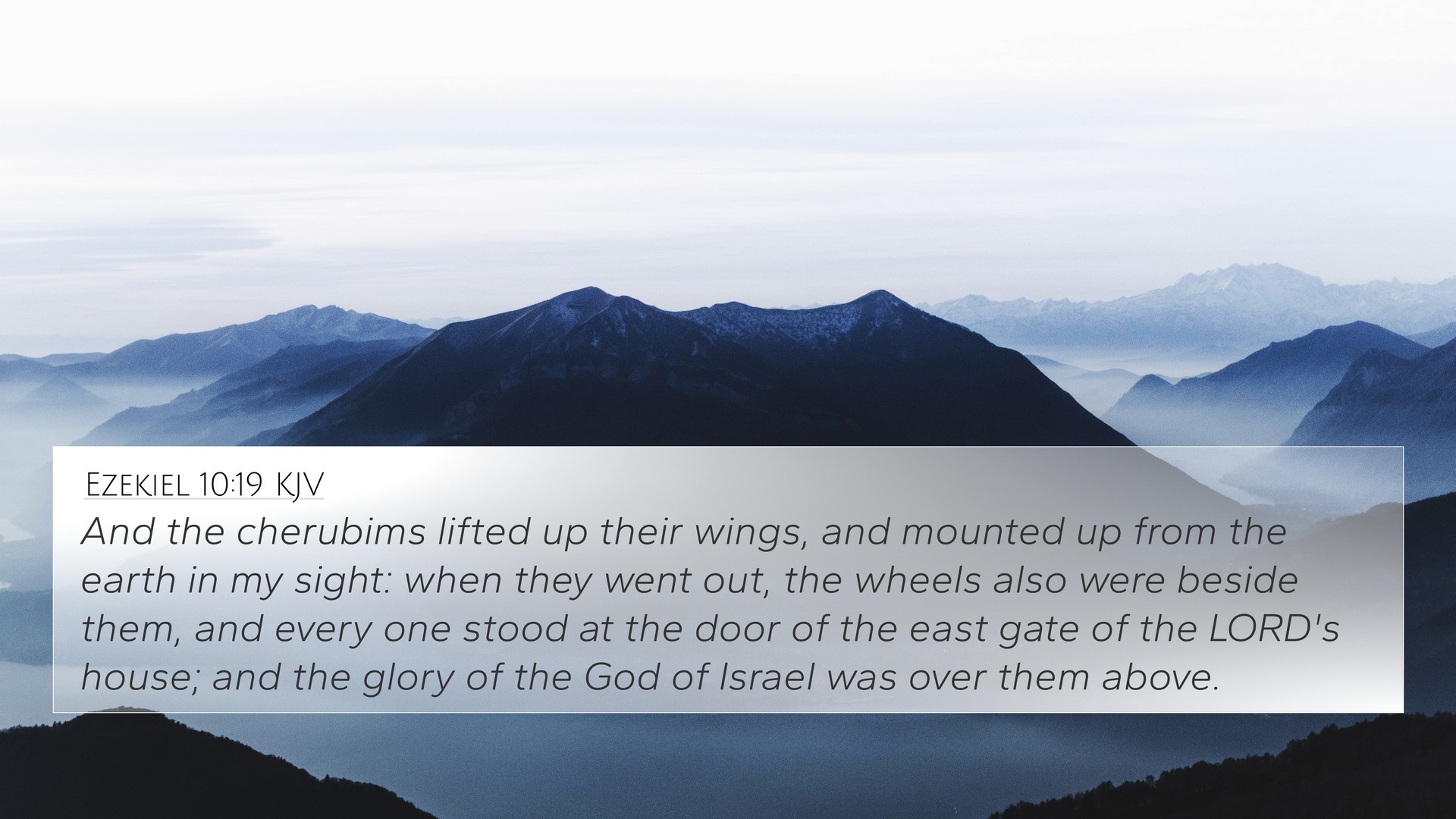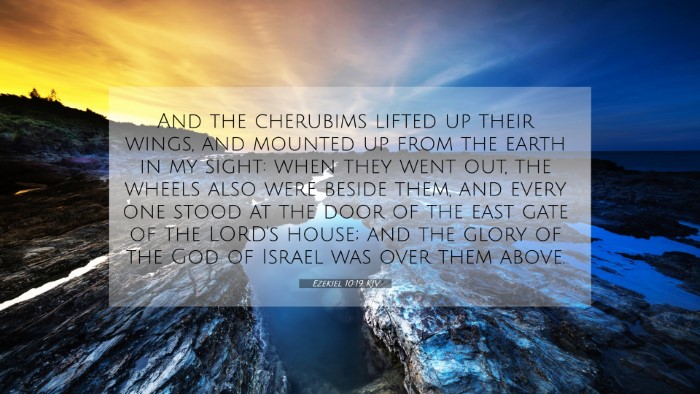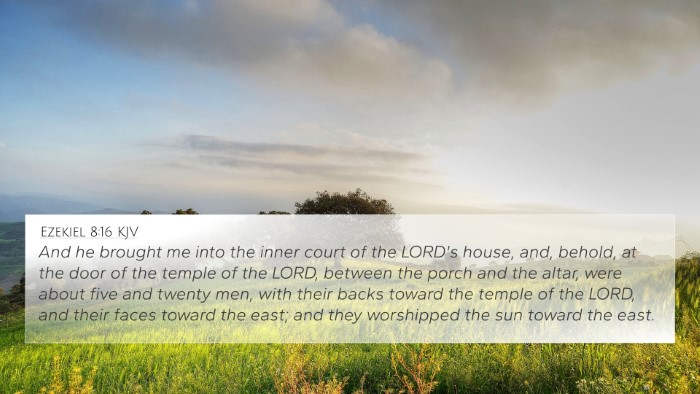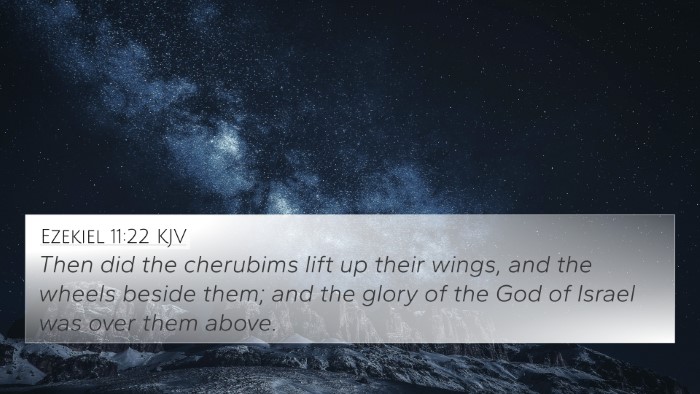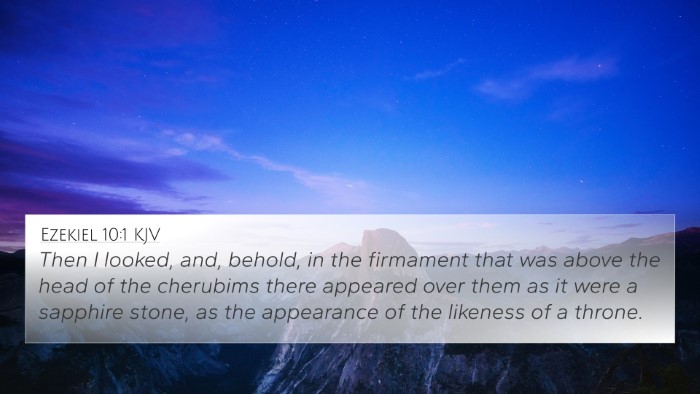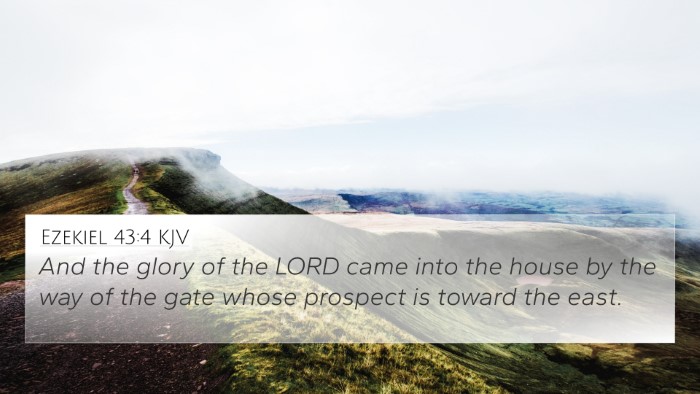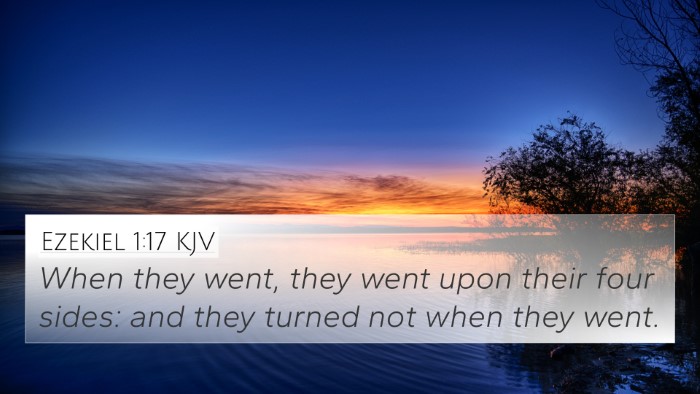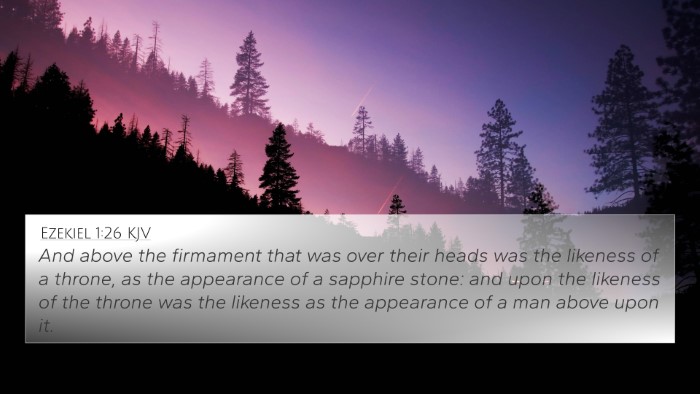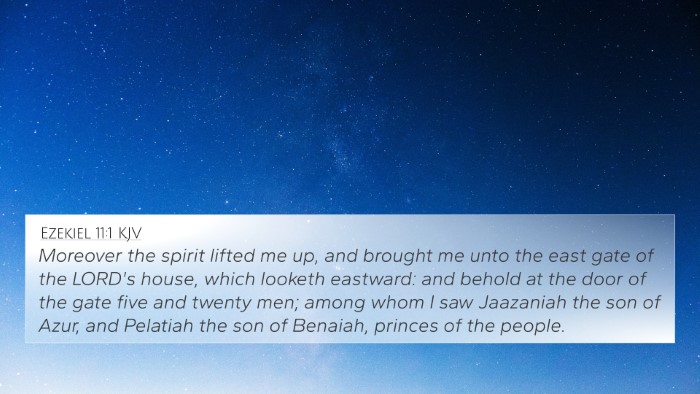Ezekiel 10:19 - Understanding the Verse
Ezekiel 10:19 presents a profound moment in the prophetic vision of Ezekiel, depicting the departure of God's glory from the temple in Jerusalem. Here, we will explore its meaning, drawing from insights provided by various public domain commentaries.
Verse Text
Ezekiel 10:19 (KJV): "And the cherubims lifted up their wings, and mounted up from the earth in my sight: when they went out, the wheels also were beside them: and every one stood at the door of the east gate of the Lord's house; and the glory of the God of Israel was over them above."
Commentary Summary
The interpretation of this verse can be understood through several key themes and elements:
- The Cherubim: Seen as guardians of the divine presence, the cherubim symbolize the majesty and holiness of God.
- The Wheels: Often interpreted as representing the omnipresence of God, conveying that His presence is not limited to one geographical location.
- The Glory of God: This indicates the divine authority and power that once dwelled in the temple but is now gradually departing, which is significant in the context of Israel's rebellion against God.
Key Insights from Commentators
Here are insights from notable commentators:
- Matthew Henry: Emphasizes the significance of God’s glory departing as a result of the people's persistent sin and idolatry, illustrating God's displeasure and judgment.
- Albert Barnes: Highlights the angelic beings (cherubim) as symbols of divine presence, noting their role as messengers and guardians in the heavenly realm.
- Adam Clarke: Explores the metaphorical meanings, drawing connections between the mobility of the cherubim and the nature of God's presence being dynamic rather than static.
Bible Cross-References
This verse connects with various other scriptures, underscoring themes of divine presence, glory, and judgment:
- Ezekiel 1:20-21: Describes the movement of the cherubim and the wheels, reinforcing the dynamic and ever-present nature of God's glory.
- Isaiah 6:1-3: The vision of God's glory in the temple and the response of the seraphim emphasizes God's holiness.
- Psalm 68:1-2: Speaks of God's glory rising as His enemies scatter, a parallel to the departure in Ezekiel.
- Exodus 25:22: The mercy seat as the dwelling place of God among His people, highlighting a profound connection to the temple.
- 1 Samuel 4:21-22: The departure of the Ark of the Covenant symbolizes God's departure from Israel due to their disobedience.
- Matthew 27:51: The tearing of the temple veil at Jesus' death signifies the end of separation between God and man, connecting to the glory departing in Ezekiel.
- Hebrews 9:8: Explains the symbolic meaning of the earthly sanctuary as a representation until the true, heavenly sanctuary was revealed.
Thematic Connections
This verse serves as a pivotal point in understanding the overarching themes of abandonment, judgment, and the hope of restoration in the prophetic literature. Numerous connections between this verse and others throughout the Bible illustrate significant concepts in both the Old and New Testaments.
Importance of Cross-Referencing
Utilizing tools for Bible cross-referencing enhance the study of scriptures and allow readers to:
- Identify connections between the Old and New Testament, thereby deepening their understanding of God's continuous narrative.
- Explore themes such as the glory of God, repentance, and divine retribution across various books of the Bible.
- Engage in a comparative analysis of prophetic books and their fulfillment in the New Testament.
How to Use Bible Cross-References
Readers are encouraged to explore various methodologies for effective cross-referencing within the Bible:
- Using a Bible concordance can facilitate finding related verses quickly and effectively.
- The implementation of a cross-reference Bible study method allows for an in-depth comparative analysis of thematic elements.
- Employing a comprehensive Bible cross-reference guide aids in navigating through the intricate links between scriptures.
Conclusion
Understanding Ezekiel 10:19 opens avenues for deeper engagement with the entirety of scripture. This verse acts as a bridge connecting multiple themes of abandonment, judgment, and the preservation of hope through God’s covenants. By exploring correlations with other scriptures, believers can enrich their faith journey and theological insights.
